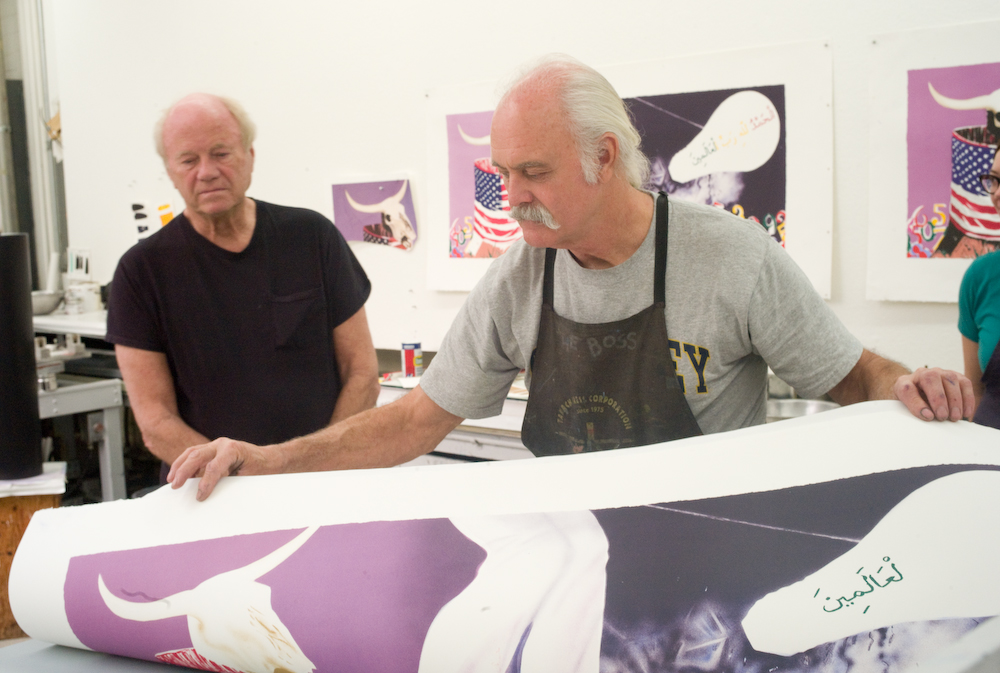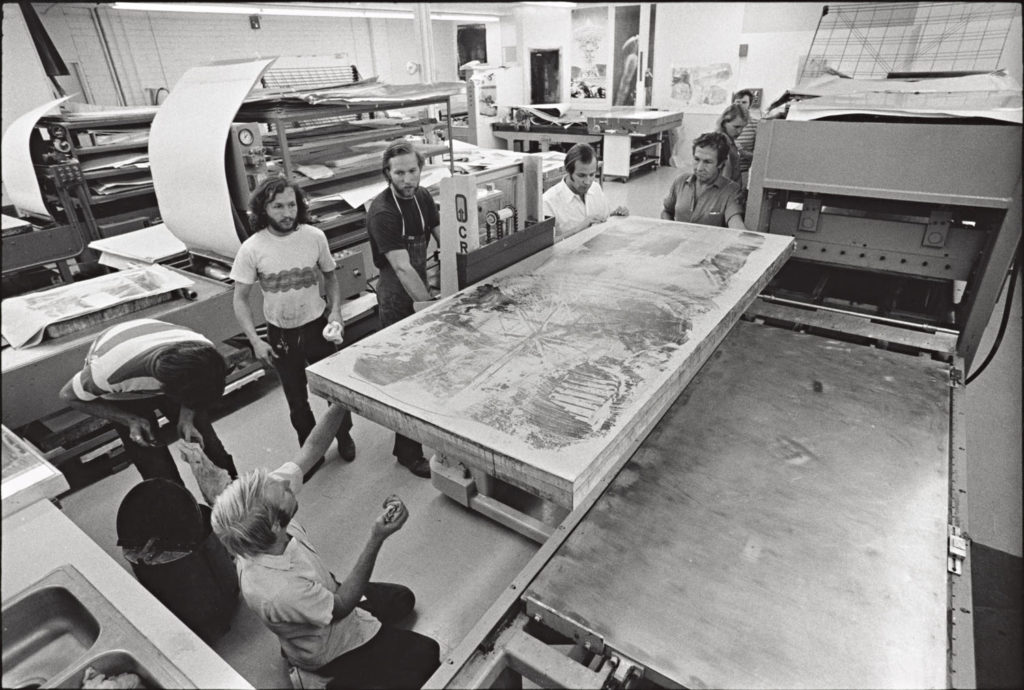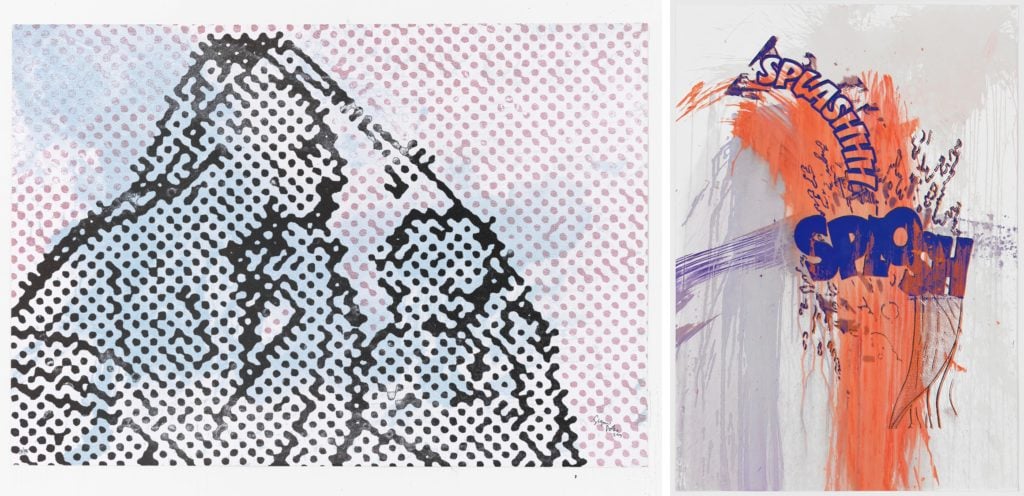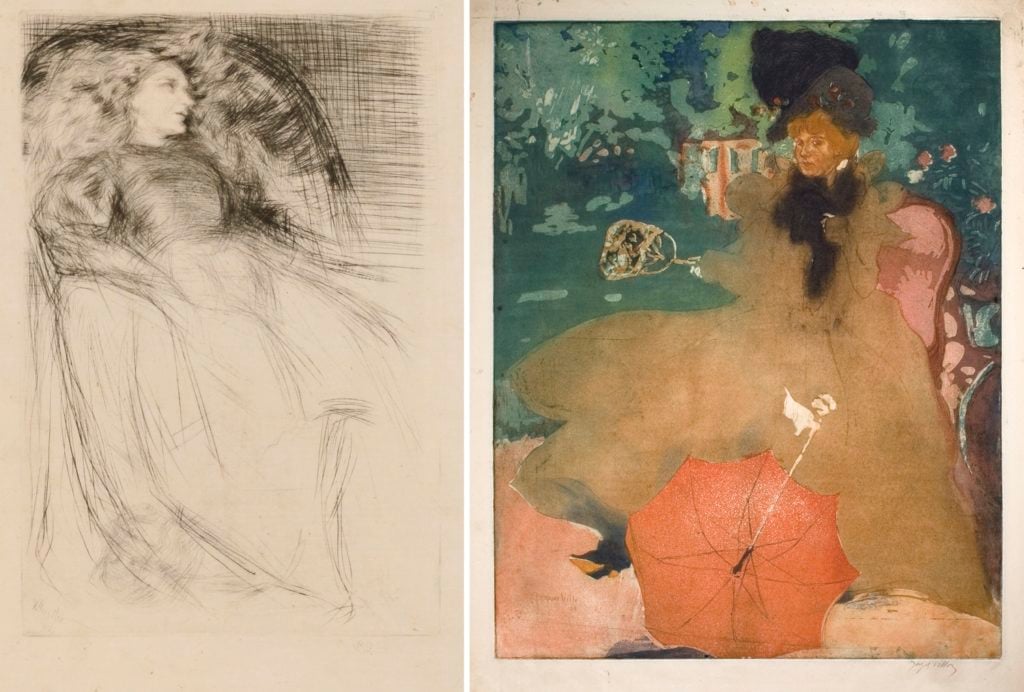Art World
Looking to Start an Amazing Print Collection? Here’s What You Need to Know
We spoke to professionals so you can get your collection started the right way.

Beginning an art collection can be daunting, especially if you are working within a budget. An original artwork by an up-and-coming artist can easily set you back $5000, and that’s just for one piece. The best way to dip your toes into the collection pool, without going broke, is through prints. Luckily, many of the most popular artists at market are also some of the most prolific printers, creating multiples of their own artwork. The most popular forms of printmaking today are lithography, etching, screen printing, and woodblock printing. Each process requires specific materials and appeals to various aesthetic choices by the artist. No matter your budget, or tastes, prints are the gateway to a sustainable and impressive collection.
Before you embark on your collection, it is important to know the basics about prints, so artnet News asked some industry-experts for a primer on the medium, and how best to approach the marketplace.
The Relationship Between Artist and Printer
Many artists come to printmaking through workshops and residencies at world-renowned studios. Blue-chip artists like Robert Rauschenberg, Sophie Calle, Frank Gehry, Philip Guston, Julie Mehretu, and David Hockney have all worked with the Gemini G.E.L. master printers.
For some insight into the process, artnet News spoke to Chris Santa Maria, Director of Gemini G.E.L at Joni Moisant Weyl about the collaboration involved in making a print. “Everything that Gemini G.E.L produces is an original work of art. Often people conflate the words unique and original. A unique work of art implies that there are not others like it, a painting for instance.” Prints, however, are by definition multiples. Each is the result of a collaboration between the printers and the artist, who work together to achieve the artist’s vision with the printer’s technical skill. So what is the relationship like between a master printer and an artist? Chris says, “the artist is better at making the art, the printer is better at executing the print.” In most cases, the artist will experiment with the techniques and push the medium farther than anyone could imagine.
“Robert Rauschenberg: Rookery Mounds, 1979” and “Selected Series” is on view at Gemini G.E.L. at Joni Moisant Weyl through September 30, 2017.

Robert Rauschenberg producing Stoned Moon Series at Gemini G.E.L., Los Angeles, 1969. Courtesy the artist; Craig Krull Gallery, Los Angeles; and The Getty Research Institute, Los Angeles. © Malcolm Lubliner.
What Is an Edition and Why Does It Matter?
The edition is the total number of prints designated by an artist for a specific image—often only limited to several per edition. Smaller edition sizes tend to command higher values since supply is more limited. Gemini typically prints edition sizes ranging from 12 to 50. Yet Andy Warhol‘s screen prints were frequently created in edition sizes of 250.
The edition number is usually written at the bottom of a print, expressed as a fraction. For example, 10/50 would indicate the 10th impression in an edition of 50. Contrary to popular belief, the individual print’s number has no bearing on value—the first is worth no more than the last, and Chris notes that often prints will be numbered after an entire edition is finished, completely arbitrarily.

Detail from Robert Rauschenberg print: artist’s signature, print number/edition, date (L); Gemini G.E.L. chop mark and stamp (R). Image courtesy of SFMoMA, © Gemini G.E.L., Los Angeles California.
There are also other notations that regularly appear on prints, along with the title and artist’s signature. The most common are: “A.P.” (artist’s proof), which carry the same image but are noted as separate from the edition run; “P.P.” (printer’s proof), a complimentary proof given to the printer by the artist; “B.A.T.” (bon à tirer), which translates to “ready-to-print,” (this is the final trial proof before printing the edition); and “H.C.” (hors commerce), which literally means “not for sale.”
Some collectors have a lucky number that they always collect, and some are interested exclusively in artist’s proofs. But Chris insists that there is no difference in value. “In the days of Dürer or Caravaggio, the first impression would be the clearest, and most true to the artist’s intent—but now, the materials and technologies have evolved such that there is literally no way to know the difference between the fifth and the fiftieth impression.”

L: Sigmar Polke, Die Frau mit Kind (2009). Courtesy of Mike Karstens Galerie; R: Christian Marclay’s Actions: Splashhh Splosh (No. 8) (2012). Courtesy of the artist and USF Graphicstudio. Photo: Will Lytch © 2015.
It’s All Happening at the Fair
The best way to enter the market for any collection is to see as much art as possible. Collectors are known for making the rounds to galleries, museums, and art fairs. And with the emergence of online platforms to browse and even buy art, there is no shortage of outlets for aspiring collectors. This fall kicks off with the New York Art Book Fair at MoMA PS1, followed by the Lower East Side Printshop’s Editions/Artists’ Books Fair and the International Fine Print Dealer’s Association (IFPDA) Fine Art Print Fair.
Dealers are a fountain of knowledge, according to IFPDA’s executive director Michele Senecal. “One of the things the fair offers is the dealers’ commitment to sharing their passion with you, to educate you,” Senecal told artnet News. Dealers that participate in the IFPDA fair are all held to the highest standards of scholarship and ethics. “When you are collecting older works, ask questions; they have the answers. They’ve vetted the object, and they can talk to you about it—when it was made and how. Discover the provenance; get a chance to learn the history of the work.” Michele gave us some teasers about the upcoming event: “For older material coming to the Fair: R. S. Johnson (Chicago) will have some strikingly beautiful prints Jacques Villon made in 1902; and we have a beautiful dreamy Whistler from Catherine Burns (San Francisco).” For those looking to contemporary artists, get excited for new work by Christian Marclay in collaboration with Graphicstudio, and a large array of work by Sigmar Polke at German-dealer Mike Karstens’ booth.

L: James Abbott McNeil Whistler, Weary (1863) courtesy of Catherine E. Burns Fine Prints and Drawings. R: Jacques Villon, L’Ombrelle Rouge (1901) courtesy of RS Johnson Fine Art.
Quality Control
Although the earliest prints, dating to the 15th century were commonly not signed, contemporary prints with the artist’s signature are more commercially valuable than unsigned works. If a print is created posthumously, a publisher or dealer will indicate that, adhering to the highest level of ethical standards. A number of large print workshops—and some artists—have individual stamps or seals. In terms of authentication, Senecal notes that while Certificates of Authenticity do exist, it isn’t typically the language used in contemporary dealing. “Asking for documentation is always important, all of the information is on the invoice, and it is vital for collecting anything of value to keep those records and maintain them.” Paper is a huge factor in printmaking, and the highest quality papers will bear the brand’s label, usually with a watermark or embossing. Certain artists prefer particular types of paper, and it may vary across projects. For example, Andy Warhol famously preferred using thinner, cheaper paper for his Campbell Soup Can prints, to achieve the aesthetic of mass-production.
Don’t Skimp on Framing
While prints are often more affordable because they exist in multiples, they are also more prone to deterioration if cared for incorrectly. Paper is delicate; even the best archival quality materials can be affected by moisture in the air. Fingerprints and smudges will not bode well for the lifespan of a work on paper, so consult gallerists and dealers who are well versed in archival methods. Most prints are available either framed or unframed, but if you don’t like the option a dealer presents, don’t skimp! “You definitely want to splurge on framing and care,” says Senecal. “You won’t be switching out frames, so treat it as part of the investment, and budget accordingly.”

The International Fine Print Dealers Association Fair, image courtesy of IFPDA.org.

SHARE

No comments:
Post a Comment